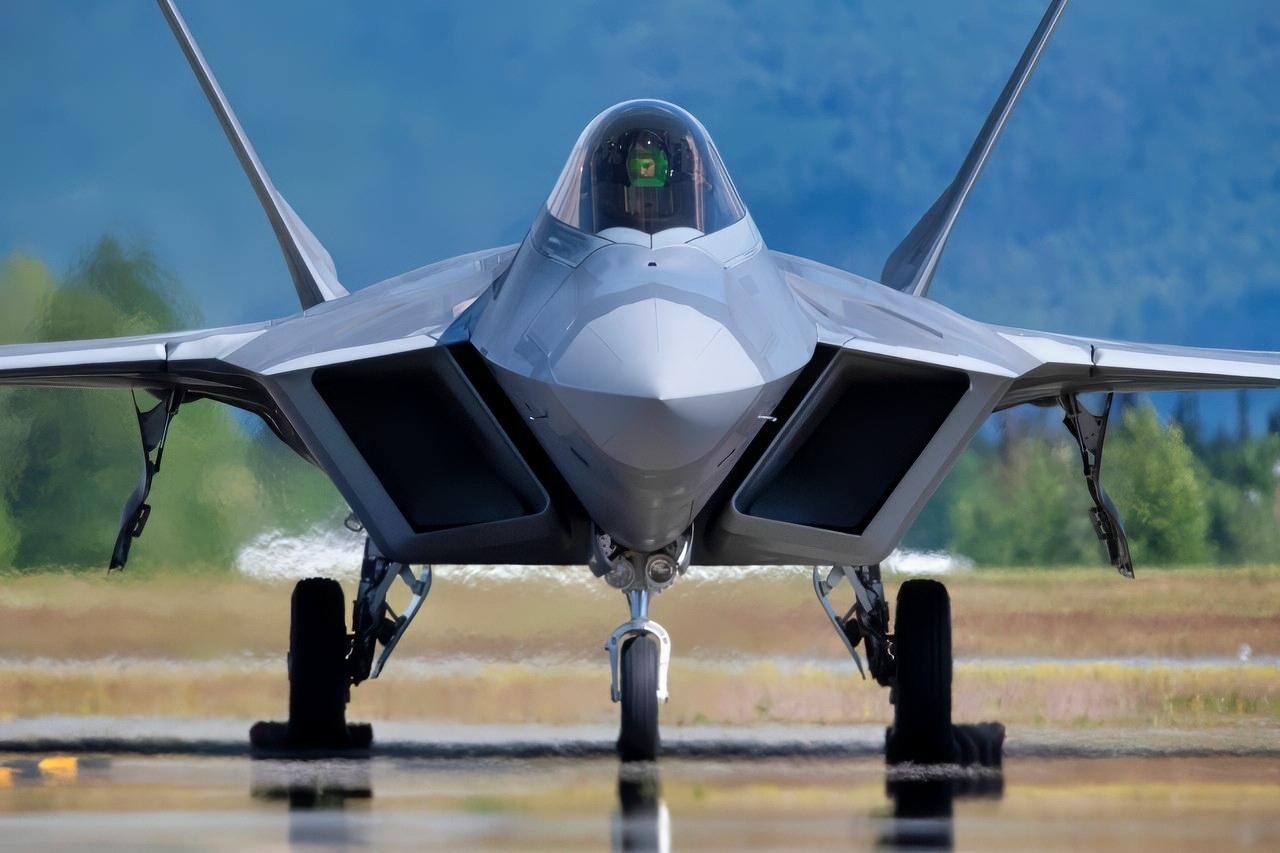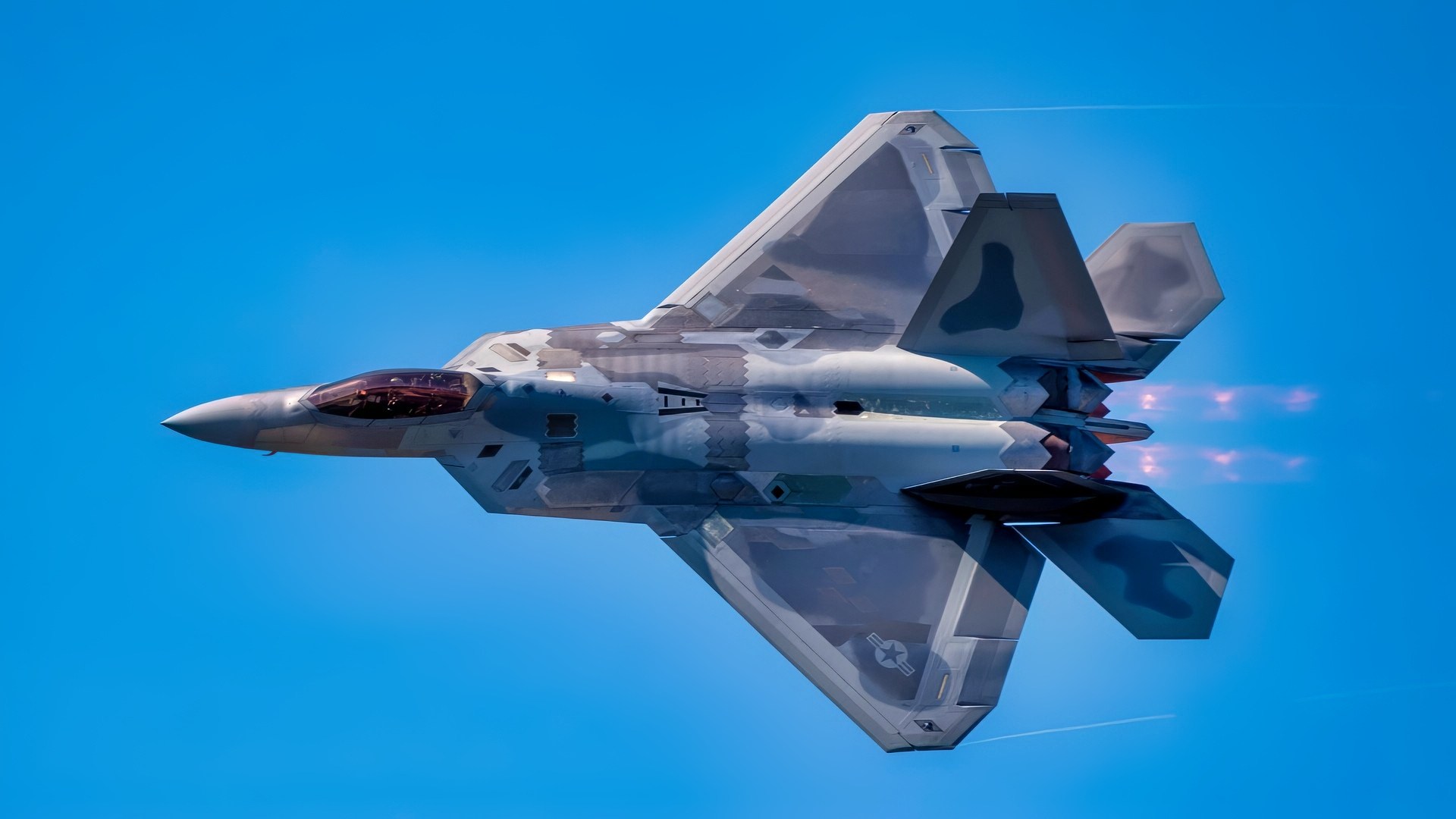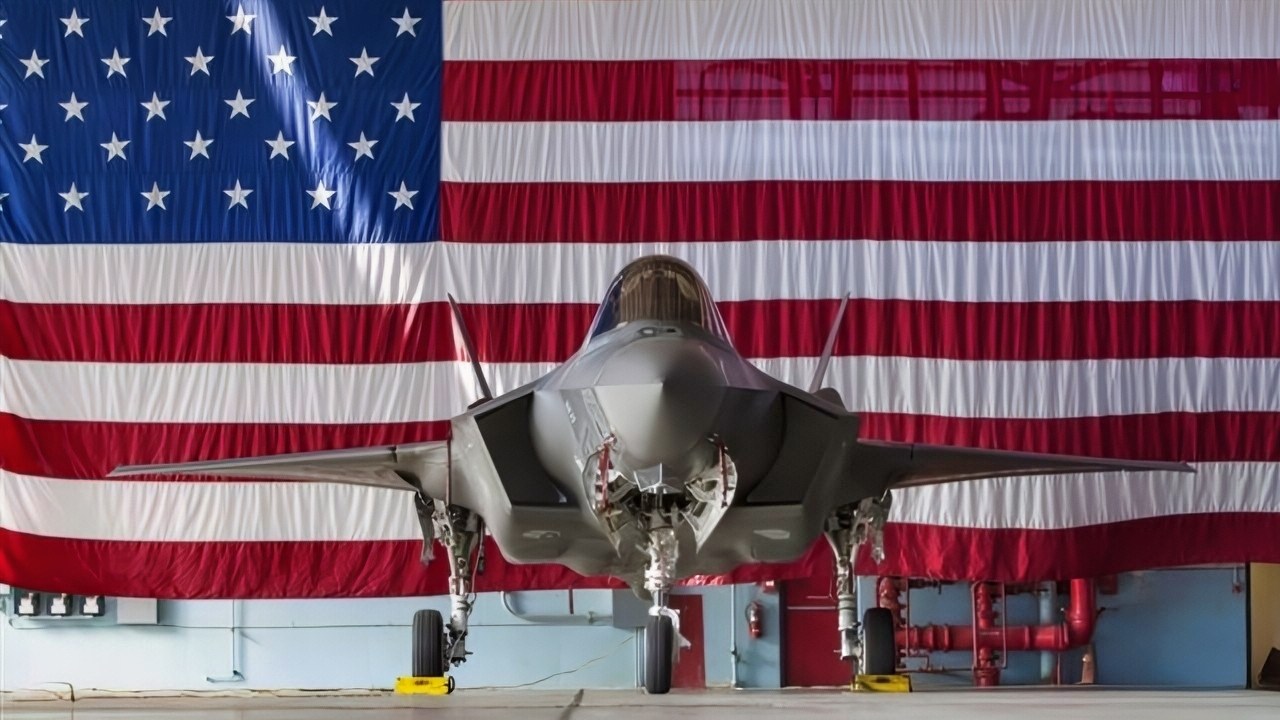Article Summary – Russia’s S-500 air defense system was billed as a game-changer, capable of swatting down hypersonic missiles and U.S. stealth jets at near-space altitudes.
-In reality, the program has stalled under sanctions, electronics shortages, labor gaps, and a wartime pivot toward simpler S-400 production and mass missile use in Ukraine.

U.S. Air Force Maj. Joshua “Cabo” Gunderson, F-22 Raptor Demonstration team pilot and commander, prepares to take off in a U.S. Air Force F-22 Raptor assigned to the 90th Fighter Squadron over Joint Base Elmendorf Richardson, Alaska, July 9, 2020, as part of JBER Salutes, a two-day event to show appreciation to service members and nearly 100 Anchorage-area “COVID Heroes” and their guests. The service members and COVID Heroes, nominated for their support to the community during the COVID-19 pandemic, toured various areas of the installation, viewed exhibits and static displays of aircraft, and watched demonstrations by Explosive Ordnance Disposal, military working dog teams, and Chemical, Biological, Radiological and Nuclear experts. (U.S. Air Force photo by Alejandro Peña)
-Moscow has talked up serial production and export deals, but only a handful of S-500s appear to be fielded, with little visible impact on the battlefield.
-For now, the “stealth killer” looks more like an over-promised, under-delivered prestige project than a deployed revolution in Russian air defense.
Russia’s S-500 Air Defense Battery Was Supposed to Defeat American Stealth. But Where Is It?
BERLIN, GERMANY – Sanctions, a shift in production priorities caused by the war in Ukraine, and a dearth of interested foreign customers have put a damper on Russia’s advanced S-500 air defense system.
The S-500 is an iterative development of Russia’s current crop of air defense batteries, and purportedly offers interception at further ranges than previous systems.
But it is also designed to intercept hypersonic weapons traveling many times the speed of sound, as well as stealthy fifth-generation aircraft like the American F-22 Raptor and F-35.
Russia has also claimed that the S-500 could engage objects at altitudes of around 62 miles, or in the near-space range.
The Development
Russia began developing the S-500 around 2010, soon after deploying the first of its newly-built S-400 batteries in 2007.
Still, the rollout of the advanced air defense systems has been repeatedly delayed, ostensibly to preserve production capacity for similar but less capable S-400 batteries.

U.S. Air Force Maj. Josh ‘Cabo’ Gunderson, F-22 Raptor Demonstration Team commander, performs during an air show in Fort Worth, Texas, Oct. 17, 2020. The F-22’s raw power and thrust vectoring technology gives the aircraft super maneuverability in the air-to-air battlespace. (U.S. Air Force photo by 1st Lt. Sam Eckholm)
In 2018, Russia conducted an S-500 air interception test. Reporting at the time dubbed the test “the world’s longest surface-to-air missile test,” clocking the interception at 299 miles and a full 50 miles further than previously known interceptions.
And while analyses of the Russian air defense system at the time made comparisons to the United States’ Terminal High Altitude Area Defense, or THAAD, a long-range air defense system developed after the 1991 Gulf War to intercept ballistics missiles in the short to intermediate ranges during their reentry into Earth’s atmosphere, Russia’s reliance on older interceptors indicate that the S-500’s interception capabilities are on par with that of the S-400.
Supply, Demand, Import, Export
Russian sources have trumpeted the serial production of components related to the S-500 before, and pronouncements that Russia would soon export the air defense system to friends and allies of the Kremlin possessed an air of authenticity prior to Russia’s full-scale invasion of Ukraine.
China and India, both long reliant on Soviet and Russian defense and industrial expertise, particularly for aerospace projects, provided seemingly logical export avenues for advanced Russian military kit.
The Kremlin does enjoy a certain degree of strategic autonomy within the production of S-500 and other air defense systems, but its supply chain is not wholly independent of foreign components.
“Russia can multiply the production of air defense missiles, primarily missiles of the 48N6 family, as they are technological products with minimal dependence on foreign components,” Michael Jerdev, a Russian military expert, told Defense News.

VIRGINIA BEACH, Va. (Sept. 20, 2025) The United States Air Force F-22 Demo Team performs at the 2025 Naval Air Station (NAS) Oceana Air Show aboard NAS Oceana, Sept. 20, 2025. The show’s theme celebrated 250 years of America’s navy and featured performances highlighting the precision, power, and innovation of naval aviation. (U.S. Navy photo by Mass Communication Specialist Seaman Apprentice Oliver McCain Vieira)
“As for the production of anti-aircraft complexes and radars themselves, their production has a long cycle and depends on the supply of foreign electronic components, which obviously does not allow them to be produced around the clock.”
But the company building the components, Almaz-Antey Concern, has experienced “problems with machine tools and a shortage of components,” a company employee explained. And while Almaz-Antey’s production rate “has increased,” the individual explained, “there are not enough workers.”
War in Ukraine
With no end in sight to the ongoing war in Ukraine—sweeping announcements of impending talks between Washington and Moscow aside—the future of the S-500 is decidedly uncertain. Russian sources report that the S-500 has been operationally deployed, but aside from limited deployment, the air defense system’s presence on the battlefield has yet to be felt.
In 2024, then-Russian Defense Minister Sergei Shoigu announced that Russian forces would receive several S-500 batteries, and Russia deployed an S-500 battery to the occupied Crimean Peninsula later that year.
Oryx, a blog that tracks visually documented equipment losses incurred during the fighting in Ukraine, does not tally any S-500 batteries among its losses, though it does count the loss of four acquisition radars, Russia’s 96L6-TsP, which can track both S-400 and S-500 batteries.
Air power has played a muted role in Ukraine. While Russia’s air forces dwarf Ukraine’s, robust air defenses on both sides, including GPS spoofing and jamming, as well as anti-aircraft assets, have limited the application of air power.

A U.S. Air Force F-35A Lightning II takes off at RAF Lakenheath, England, Sept. 16, 2024. The 48th Fighter Wing dedicates allotted flying hours during hours of darkness to ensure Airmen are prepared to deter potential adversaries and defend NATO territory anytime, anywhere. (U.S. Air Force photo by Airman 1st Class Alexander Vasquez)
Rather than forcing its pilots to evade Ukrainian air defenses, the Kremlin has instead opted for a stand-off strategy of lobbing glide munitions and long-range missile weaponry at Ukraine, leaving little opportunity for the S-500 — even if Russia could reliably produce the system at scale.
S-500: What Happens Now?
Analyses of the S-500’s specific capabilities are particularly fraught, given the surface-to-air missile system’s minimal deployment and dearth of information on its operational use, if any.
Given the system’s complexity and the S-500’s potential reliance on older interceptor missiles, its true capability is likely more limited than publicly touted by its builders and the Russian press.
Combined with Russia’s current emphasis on prosecuting its war in Ukraine—primarily a conflict on land—the strategic impetus for building S-500 batteries in large numbers is lacking.
And with the Russian economy seemingly on the verge of stagnation, precious few rubles will be available for advanced air defense projects like the S-500.
About the Author: Caleb Larson
Caleb Larson is an American multiformat journalist based in Berlin, Germany. His work covers the intersection of conflict and society, focusing on American foreign policy and European security. He has reported from Germany, Russia, and the United States. Most recently, he covered the war in Ukraine, reporting extensively on the war’s shifting battle lines from Donbas and writing on the war’s civilian and humanitarian toll. Previously, he worked as a Defense Reporter for POLITICO Europe. You can follow his latest work on X.
More Military
Who Has the Fastest Hypersonic Missile? Russia, China, or the US?











Xyz
November 21, 2025 at 7:17 am
And ballistic missile, satellite in LEO…